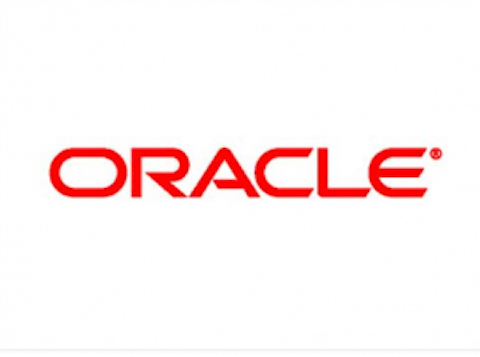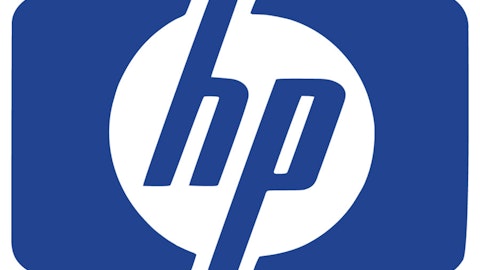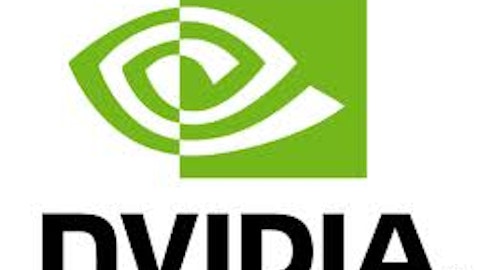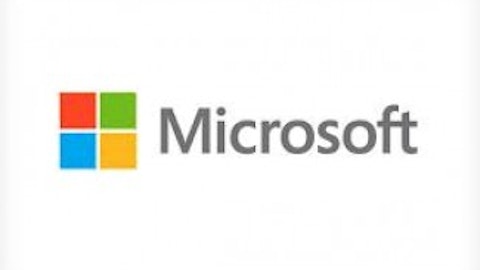
With that in mind, I decided to take a closer look at U.S.-based cash-rich firms. With more than $41 billion in total current assets, Oracle Corporation (NASDAQ:ORCL) was one of them. So let’s review Oracle’s overall fundamental state. Most importantly, let’s see what the firm is doing with all the cash piled up in its coffers.
Financial performance and cash position
A hefty jump in quarterly profits allowed Oracle to crush analysts’ expectations and end the second quarter of fiscal 2013 with a remarkably strong cash position. Oracle’s global reach and diversification of product offerings prompted solid organic growth in most of its core businesses. Total revenues increased at a nice clip, primarily because of augmented new software licenses and software subscriptions sales. As a result, Oracle achieved a healthy financial performance, supported by robust operating cash flows.
Overall, for the past five years, the firm’s working capital and total assets have followed a clear uptrend. This accelerating pace was mainly driven by a sequential increase in net income, which in turn, led to a steady rise in net current assets. At the same time, its financial leverage remained stable in terms of historical standards.
As of and for the year ended May, 31 | |||||
| 2012 | 2011 | 2010 | 2009 | 2008 | |
Working capital (in millions) | $24,635 | $24,982 | $12,313 | $9,432 | $8,074 |
Total assets (in millions) | $78,327 | $73,535 | $61,578 | $47,416 | $47,268 |
Source: Oracle’s financial reports
As of Nov. 30, 2012, the company’s balance sheet showed a more than $28 billion differential between total current assets and total current liabilities. This translates into a current ratio that stands well above the industry’s median. Thus, the firm was more than able to address maturing short-term debt and satisfy operational expenses. Moreover, as of the end of fiscal year of 2012, Oracle had an aggregate $16.5 billion of outstanding indebtedness. Taking into consideration the company’s cash-generating capacity, its long-term debt obligations seem perfectly manageable.
But how does Oracle spend its cash?
The lion’s share of Oracle’s cash reserves goes into its aggressive growth strategy. Over the past seven years, the leading specialist in computer hardware and business software has made countless acquisitions. In 2012 alone, it closed eleven deals. This way, Oracle aims to broaden its footprint and strengthen its product offerings.
For instance, according to Larry Ellison, the company’s CEO, the deal to acquire Sun in 2010 has proven to be a highly profitable investment. So far, integrating Sun’s technology has fired up Oracle’s software business. Also, Ellison expects the resulting optimized solutions to enable Oracle’s struggling hardware division to turn around. Analysts suggest that Oracle’s latest deal to buy Acme Packet, Inc. (NASDAQ:APKT) signals a brave move into the networking equipment market. This is one of the few areas in technology where Oracle is not a major player.
Apart from seeking to accelerate innovation through acquisition activities, Oracle invests part of its cash pile in increasing shareholders’ value. During the last four quarters, the firm returned $10.2 billion of its operating cash flow to shareholders by repurchasing nearly 350 million shares. In addition, it used some of its free cash flow to accelerate its dividend payments.
Two years ago, the quarterly dividend was $0.05 per share; the latest cash distribution stood at $0.18 per share. Admittedly, uncertainty over the U.S. government’s fiscal plans may have prompted this increase. Also, the current yield of 0.70% might not be juicy enough to attract investors’ interest. But still, Oracle is among the very few companies within the industry that pay a dividend.
What about the rest?
Oracle holds a rather diversified product and services portfolio, which means that it competes with an extensive set of companies. Nevertheless, in terms of product offerings, some of its closest competitors include International Business Machines Corp. (NYSE:IBM) and SAP AG (ADR) (NYSE:SAP). So I decided to see how Oracle’s key growth, financial, and cash flow indicators compare to its rivals.
| 5-year Revenue CAGR% | Debt-to-equity ratio | Current Ratio | Operating Margin% (ttm) | Free cash flow /Sales % (ttm) | |
| Oracle | 15.6% | 0.46 | 3.33 | 38.49% | 34.44% |
| IBM | 8.7% | 1.75 | 1.13 | 20.59% | 15.48% |
| SAP | 3.2% | 0.37 | 1.05 | 25.10% | 21.53% |
Source: Yahoo! Finance and Morningstar
Oracle appears to be the hands-down winner in the revenue race. Also, its cash-generating capacity and overall financial discipline underlie the sustainability of its acquisition strategy.
SAP reported impressive fourth-quarter results, indicating strong demand for its cloud and mobile applications, as well as its in-memory database platform, HANA. Yet the acquisition of SuccessFactors, Inc. (NYSE:SFSF) and Ariba, Inc. (NASDAQ:ARBA) in 2012 left a noticeable mark on the company’s net cash position. Net liquidity at the end of 2012 stood at – €2.50 billion (-$3.30 billion) compared to €1.64 ($2.16 billion) the prior year.
For full-year 2012, IBM achieved a noteworthy year-over-year growth in diluted EPS, but total revenue remained flat compared to 2011. Overall, its balance sheet revealed mixed results. IBM ended 2012 with $11 billion in cash on hand, roughly as much as it had the previous year. However, the company’s total current assets hardly exceeded its total current liabilities.
Bottom line
To sum up, a large cash pile means safety for turbulent times. Most importantly, cash provides flexibility in addressing the capital needs of an aggressive growth policy. Oracle is a living example.
So far, the firm’s strong cash position has enabled it to take advantage of acquisition opportunities. This way, Oracle established a strong foothold in the competitive application software industry and boosted its growth potentials. Oracle’s future looks bright with Morningstar indicating a greater than 14% five-year growth forecast.
The article Oracle’s Cash Pile Suggests Long-term Gains originally appeared on Fool.com and is written by Fani Kelesidou.
Copyright © 1995 – 2013 The Motley Fool, LLC. All rights reserved. The Motley Fool has a disclosure policy.




